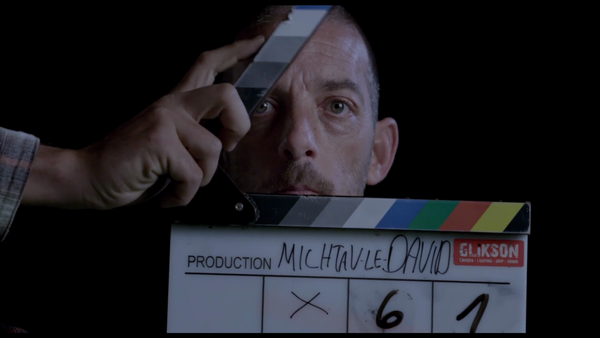Everything you need to know about the Law/Business Faculty Merger

The University of Auckland has been undergoing a myriad of changes to staff and organisational structure the past year, the latest being the proposal to merge the Law School and School of Business & Economics. This poses a huge potential impact on students and staff as there is the potential to restructure courses, changes in faculty focus, and possible changes to support services. Initially proposed by Vice-Chancellor Dawn Freshwater, the merger has been met with a lot of questions and concerns from students, staff, and even external organisations.
This merger was initially proposed on November 12th, 2024 - 6 weeks before the university closed for the summer, but after most students had clocked out for the summer. Submissions were open until January 20th, 2025, with a senate discussion to be held on February 24th, and then a Council meeting on March 17th. The biggest theme that seemed to stand out from responses to this was the lack of consultation with those that would be involved and affected by this merge. If this decision moves forward, new faculty will be made into effect from the beginning of Quarter 3, 2025 (June 23rd).
The proposal follows the finalisation of two other faculty mergers in 2024, which saw the splitting up of the Faculty of Creative Arts & Industries into the Faculty of Arts & Education and the Faculty of Engineering & Design. The news of another merger was, as expected, just as unsettling. With confirmed reductions in the number of roles and also allowing voluntary redundancies, the faculties have been pushing to keep what they can. The new faculties are currently in their transitional period which will last until April.
What is in the Proposal?
The Law School will separate into two departments: Public Law and Private Law. Public Law will focus on Criminal law, Environmental, Indigenous, and International. Private Law will cover the areas of Commercial Law, Corporate law, Intellectual Property, and Technology. Due to Private Law containing courses around Commercial Law, the department of Commercial Law from Business School will be merged with Law School. The UOA staff Q&A added to its article on this matter on November 21, 2024, that “Establishing two departments would ensure academic staff receive the necessary mentoring and support”. This brings forward the question of how staff are being supported in their faculties already, and does this merger allow for people to grow professionally or will they be stifled with more workload?
These departments of Public and Private law will have a head of department, one of whom will be the Dean of the Law School, and the other will be Deputy-Dean. Under the proposal, the Dean of Law will then be reporting to the current Dean of Business & Economics, Professor Susan Watson, whose teachings focus on Commercial Law.
This proposal, found on the UOA News and Opinion page (24/01/2025), follows a line of reasoning in that it “...would allow [the university] to streamline resources and support structures, aligning more closely with other faculties in size and capacity”. When you remove the corporate jargon of this sentence, it actually alludes to a more practical and ideal sense of efficiency. By combining both faculties, they are looking at making them similar in size to the other merged faculties. Efficiency is often the main benefit associated with most mergers, we must question whether this goal reflects the best interests of the students and staff, or if it’s a convenient cover for potential budget cuts and job reductions.
While mergers between university faculties isn’t uncommon, it’s important to note that most of these are driven by financial pressures or even some efforts to consolidate resources. These changes do still remain controversial though as they can easily lead to course restructuring and staff layoffs. It would also be remiss of our reporting if we didn’t mention the Law and Business Schools merger that was proposed by Freshwater, and Paul Johnson, at her previous university, the University of Western Australia. This proposal worked towards saving the university approximately $40m, as part of a university wide consolidation. This merger was later undone in 2020. Given this is an example of a previous merger that didn’t work successfully, it’s interesting to consider why this proposal is now being considered for UOA.
The Proposal’s Reception
The University’s proposal has sparked significant online attention and discussions, with some contributors including Radio New Zealand, We Are The University (UOA activist group), and Reddit’s good old r/universityofauckland thread.
One side of the merger had a larger presence and voice when it came time to publicly speak on their opinions. The legal community seemed to show the most resistance to this proposal, with some of the most notable responses coming from the Criminal Bar Association and the New Zealand Law Society. Some common themes that showed up in responses were the impact on the law school’s reputation, the lack of clarity of the private and public law departments, and the lack of evidence or data that shows this is needed and will work.
It was difficult to find an article or response from someone who works within the Business School online. If there is a response, I will gladly hear it and report on it. But until that happens, I will air my questions here. Why the radio silence? This absence of commentary doesn’t help to ease the minds of students and staff, leaving further questions about the impact on the internal organisation and course structures. What help can students expect from their current faculty when navigating this merger? What effect will this have on those currently studying and their degrees?
Student voices online, especially those on r/universityofauckland, are quite attuned to the idea that this merger is driven mainly by financial considerations. So the question here would be - is it? And if cutting costs is the central point to this merger, who does this serve? Is it for staff wellbeing, student education enrichment, stakeholder and investor interest, or broader institutional goals?
In the lead up to this article, I reached out to staff members from both schools either on their submissions or for a comment. I was even able to receive a comment from one of the Unversity’s media advisors which reads:
“The University is reviewing the submissions received from staff, students and stakeholders in the consultation process, which closed on 20 January. The University will not be commenting further until all feedback has been considered”.
This was the consensus across the board from all contacts. While I understand the sensitivity at the current point of this process, it does call to question if the timing was in some way strategic to be able to give no comment in the week where students return or start their studies.
While the University continues to read through the submissions and prepare for the council decision meeting, the UOA community will be left wondering whether the merger will continue ahead or if their concerns will be enough to stop it. We’ve already undergone the mergers of Arts, Education, and Creative Arts, and Engineering, Design, and Architecture. Do we need to keep thinking even further ahead at the possibilities of what might become of the Faculties of Science, and Medical and Health Sciences? For now, we wait.
Timeline of events for the Law/Business Merger
- November 12, 2024: Initial proposal for the merger announced
- November 21, 2024: Staff Q&A added to the UOA news article
- December 2024 - January 2025: Period for submissions opens and closes
- January 20, 2025: Deadline for public submissions
- February 24, 2025: Senate discussion
- March 17, 2025: Council meeting to finalise decision
- June 23, 2025: Proposed start date for the new faculty structure




